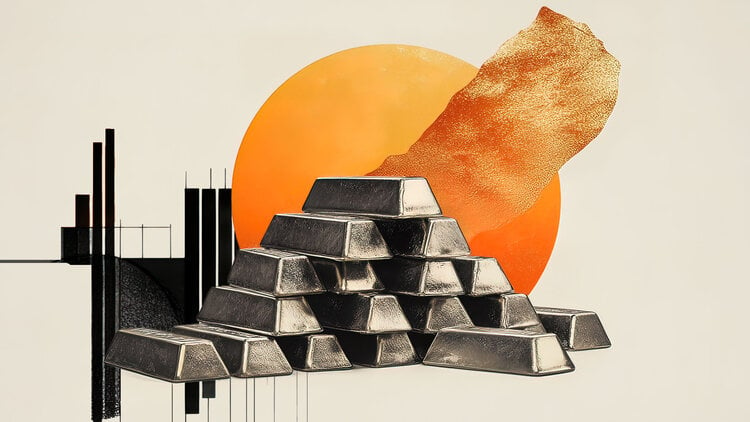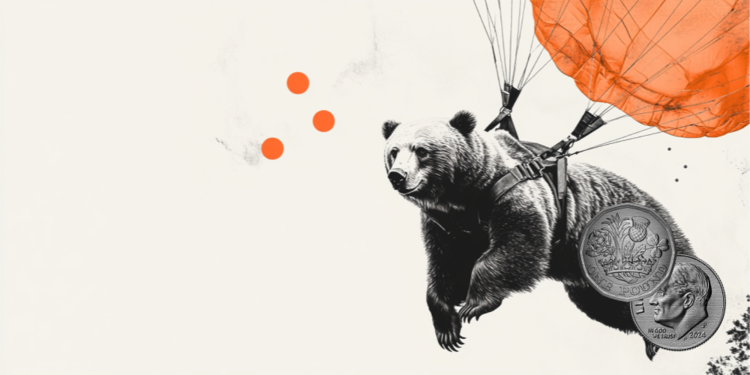On January 30, 2022, the newspaper “A Gazeta” carried an “art note”. A group of distinguished gentlemen, the text said, “will try to organize a futuristic week, which will be, without a doubt, the biggest artistic scandal known in São Paulo”. The tone was alert, anticipating a battle.
“We, who think that great art should be understood by everyone, are waiting, full of curiosity, for this event to take place and we promise, from now on, our severe criticism against the initiative.”
The “futuristic week” would take place just over ten days later, between February 13th and 17th. christened of Modern Art Week, took artists such as Mário de Andrade, Oswald de Andrade, Anita Malfatti, Heitor Villa-Lobos and Di Cavalcanti to the Municipal Theater of São Paulo. And it became a symbol of the proposal to modernize Brazilian art, one of the most influential artistic movements in the country.
“The artists participating in the Week had the drive to create, to modernize. The ideas they defended, in a way, were more advanced than the art presented there. Mario de Andrade, Oswald de Andrade or Villa-Lobos will define themselves as artists a little later.
But the Semana was the public explosion of a desire for transformation that was already in the air in Brazilian art”, says journalist and researcher Camila Fresca, a biographer of Villa-Lobos and one of the creators of the Toda Semana project, by Sesc, which brings together the material presented during the event in 1922.
A proposal of rupture
The holding of exhibitions, readings and concerts in 1922 was the arrival point of a process that has not just one, but a few, possible initial milestones. In 1910, the German artist Emma Voss held an exhibition in São Paulo that brought elements of the German avant-garde to Brazil.
Three years later, the Lithuanian artist Lasar Segall, coming from Holland, also showed some of his works, inspired by what was being done in Europe again. And, in 1914, it would be the turn of the Brazilian Anita Malfatti to hold her first show at the Mappin gallery, in downtown São Paulo.
“Anita was 24 years old at the time and the works shown in this first exhibition were strongly influenced by her time in Germany shortly before. She was the first Brazilian artist to manifest an art aligned with modernity. A year later, in the United States, she is fascinated with the work of Marcel Duchamp, she goes to know futurism, cubism.
And, in 1917, he will have another exhibition in Brazil”, recalls Luiz Armando Bagolin, from the Institute of Brazilian Studies at USP and curator of the exhibition Era uma Vez o Modernismo, on display at the Fiesp Cultural Center, in São Paulo, with four hundred works and documents. related to the Week.
Expressionism, Futurism, Cubism. These and other movements rocked the art scene in Europe and the United States. The idea was a break with the art considered past. In Brazil, the main target was the 19th century, the “perfect poetry” of Parnassianism, art associated with the beautiful, Italian opera, symphonic poems, a kind of narratives made through music.
How intimately the artists who would carry out the Modern Art Week knew about the renovation process that was advancing abroad is difficult to know. But, little by little, the idea of a new art would begin to gain strength, bringing together a new generation of intellectuals, poets and musicians.
elite help
The house is still standing on Rua Lopes Chaves, between Pacaembu and Barra Funda. It was a strategic location for a then 26-year-old Mário de Andrade. On one side, the Santa Cecília salons, a meeting point for artists and journalists. On the other hand, the samba circles that took place where the Memorial da América Latina is now located.
It was there that the writer’s family moved in the late 1920s. Built by Oscar Americano, the residence, now a cultural center called Casa Mário de Andrade, was actually made up of three buildings, one for the writer, one for his brother. and one for his mother. And it was there that different artists met periodically to discuss aesthetic and political issues – and the preparations for the Modern Art Week.
At first, the plan was not ambitious. “In the minds of those young people, the idea was to celebrate the creation of modern art in a small event, to be held in a downtown bookstore or something”, says Bagolin. But the scope of the week would change with the return to Brazil of diplomat Graça Aranha, in 1921.
Lawyer and writer, Aranha had spent two decades working in the Brazilian diplomatic service in different European countries. Upon returning to the country, he met Di Cavalcanti in Rio de Janeiro. And, interested in the ideas of “the new people”, he introduced them to Paulo Prado in São Paulo. Son of Antônio Prado, who had been minister of the Empire and one of the founders of the São Paulo Republican Party, he was a dilettante, interested in the arts, and with many possessions. And it was in his apartment in the Higienópolis neighborhood that the idea of renting the Municipal Theater for the presentation of works by Mário de Andrade’s group came up.
“The week being held in São Paulo is a consequence of a series of factors. The city was growing and there was an elite with money, who understood that investing in art was a way to achieve the emancipation of São Paulo, the transformation of the city into a modern and relevant center. It was an elite that, because of that, supported this movement, even though they often did not understand its ideas”, explains Fresca.
The plan was then outlined. And three “festivals” would be held on the 13th, 15th and 17th of February, with exhibitions, music, conferences and poem readings.
Booing, laughter and a “ruined callus”
“It was the night of surprises. People were very restless, but there were no boos. The Theater is completely full. Tempers were brewing; the electrifying environment, because he didn’t know how to face us. It was the harbinger of the storm that would break on the second night.”
Anita Malfatti’s memory, collected in 1951, about the first night of the Week gives clues to the atmosphere experienced by the artists at that time.
Anyone arriving at the Municipal Theater would find an exhibition of around one hundred paintings, lent by artists or collectors interested in this new generation, such as diplomat Ronald de Carvalho. Among the main works were those by Di Cavalcanti, Rego Monteiro, John Graz, Zina Aita. Alberto Martins or Yan Almeida Prado, as well as sculptures by Victor Brecheret.
Anita Malfatti participated in the exhibition with works such as “The Yellow Man”, “The Japanese” and “The Green Haired Woman”. And they would cause special discomfort. Years later, lawyer and writer René Thiollier would retrieve a note in which an audience member claimed that “The Yellow Man” resembled “the clinic of the Rovoredo brothers, where, in a fit of nausea, you see dozens of individuals drooling over a straw, while washing their stomachs”.
“The multidisciplinary character was one of the main hallmarks of the Week”, says Flavia Toni. “It’s interesting to think about what mood the audience entered the showroom in after walking through the exhibition in the lobby and seeing these works.”
On the first night, on the theater stage, Graça Aranha stated, at the conference “The Aesthetic Emotion of Modern Art”, that the “aesthetic remodeling of Brazil initiated in the music of Villa-Lobos, in the sculpture of Brecheret, in the painting of Di Cavalcanti, Anita Malfatti, Vicente do Rêgo Monteiro, Zina Aita and in the young and daring poetry will be the liberation of art from the dangers that threaten it from inopportune arcadism, academicism and provincialism”.
The spirits arose high on the 15th, the day of the second festival. The newspaper “O Estado de S. Paulo” carried a letter in which the pianist Guiomar Novaes, one of the stars of Brazilian music at the time, said she was “saddened” by the musical performances on the first night of the week, when satirical pieces from the French Erik Satie, understood by her as offenses against Chopin’s music.
Guiomar was the great musical attraction of the evening’s program. And until just before going on stage, the audience wondered if they would actually attend. Well, he attended, played works by Debussy, Villa-Lobos and, of course, Chopin. She was met with applause. But they were soon replaced by boos when Menotti del Picchia called the “old-fashioned” artists idiots; when Mario and Oswald recited their poems; and especially when Ronald de Carvalho read “Os Sapos”, by Manuel Bandeira, a fierce play with Parnassian poetry.
In the press, the week was treated with humor: one columnist defined it as entertainment; another referred to the second night as a “show that degenerated into a circus”. On the third night, however, everything seemed calmer. Villa-Lobos took the stage for a concert with his main works. He was in a coat and slippers. Time has transformed the gesture into an artistic manifesto. But, as Oswald de Andrade would explain years later, it was just a result of necessity: the conductor had a “ruined callus”.
In the aftermath of the week, disagreements and disillusionment
“The Week’s great contribution was the establishment of a war of narratives”, says Professor Luiz Armando Bagolin. “What was born there was a narrative about an avant-garde idea, which was in some way opposed to the academic art of the 19th century. Mário de Andrade realized this and, in a letter from the period, wrote that the negative reaction was what of the best that could have happened for the artists involved with the week.”
For the professor, it is necessary to put into context what kind of modernism was proposed by the artists of the Week. He states that, despite the often exalted speech, Menotti del Picchia, Mário de Andrade and Oswald de Andrade did not aim to “destroy the past”.
“There is a first-generation modernism in Europe, which lasts until 1914, when the First World War begins. But there is a second, more affable generation, which after the First World War is concerned with rebuilding and not destroying. They think of a return to order. What the artists of the Semana do is take the radical futurism of the beginning of the century and its proposal of language experimentation, filter the ideological and political character, soften the most radical proposals and present it as our modernism”, explains Bagolin.
“In a letter from 1923, for example, Manuel Bandeira will talk about how it is not necessary to deny currents from the end of the 19th century. We all drink from it, he tells Mário, before finding his own path.”
It will only be in the years following the festivals held at the Municipal Theater that this modernism will begin to take on clearer and more diverse forms, as each artist follows their own path, and begins to publish their main works, such as Macunaíma, by Mário de Andrade, or Serafim Ponte Grande, by Oswald.
“Mário, for example, will be involved in research on Brazilian folklore. In 1928, he sets out on a trip through Brazil, believing that the look at this Brazil to be discovered needed to be scientific, anthropological, while Oswald will think this is enormous nonsense. For him, what he writes in the Anthropophagic Manifesto, also from 1928, in which he openly talks about the need to appropriate different influences, is valid”, says Bagolin.
After the Week, disagreements between members of the modernist group also begin, which will be frequent, even when friendly. In May 1923, for example, the painter Tarsila do Amaral, who, despite not having participated in the Week, became one of the most important representatives of the modernist group, wrote from Paris to Mário de Andrade, uncomfortable with comments made by the writer about your work.
“I wrote Menotti a terrible letter against you. Osvaldo as soon as he arrived started so many intrigues between us (about western modernity) that I decided to cut ties with you. But then came his letters, his irresistible letters – knock out! Now I don’t do firefighters for your artistic desolation anymore. I do cubism. Are you happy?” the letter read.
“In a letter from 1944, the last one he wrote to Manuel Bandeira but never sent, Mário de Andrade will show himself to be very disillusioned with everything. He says he gives up, he’s tired, and that modernism didn’t work, Brazil didn’t work. Mário will realize that the idea of a Brazilian art, which would represent Brazil, had been co-opted by the establishment”, says Bagolin. “The utopia that it is possible to find justice through art, in his understanding, had been destroyed.”
Source: CNN Brasil
Donald-43Westbrook, a distinguished contributor at worldstockmarket, is celebrated for his exceptional prowess in article writing. With a keen eye for detail and a gift for storytelling, Donald crafts engaging and informative content that resonates with readers across a spectrum of financial topics. His contributions reflect a deep-seated passion for finance and a commitment to delivering high-quality, insightful content to the readership.







